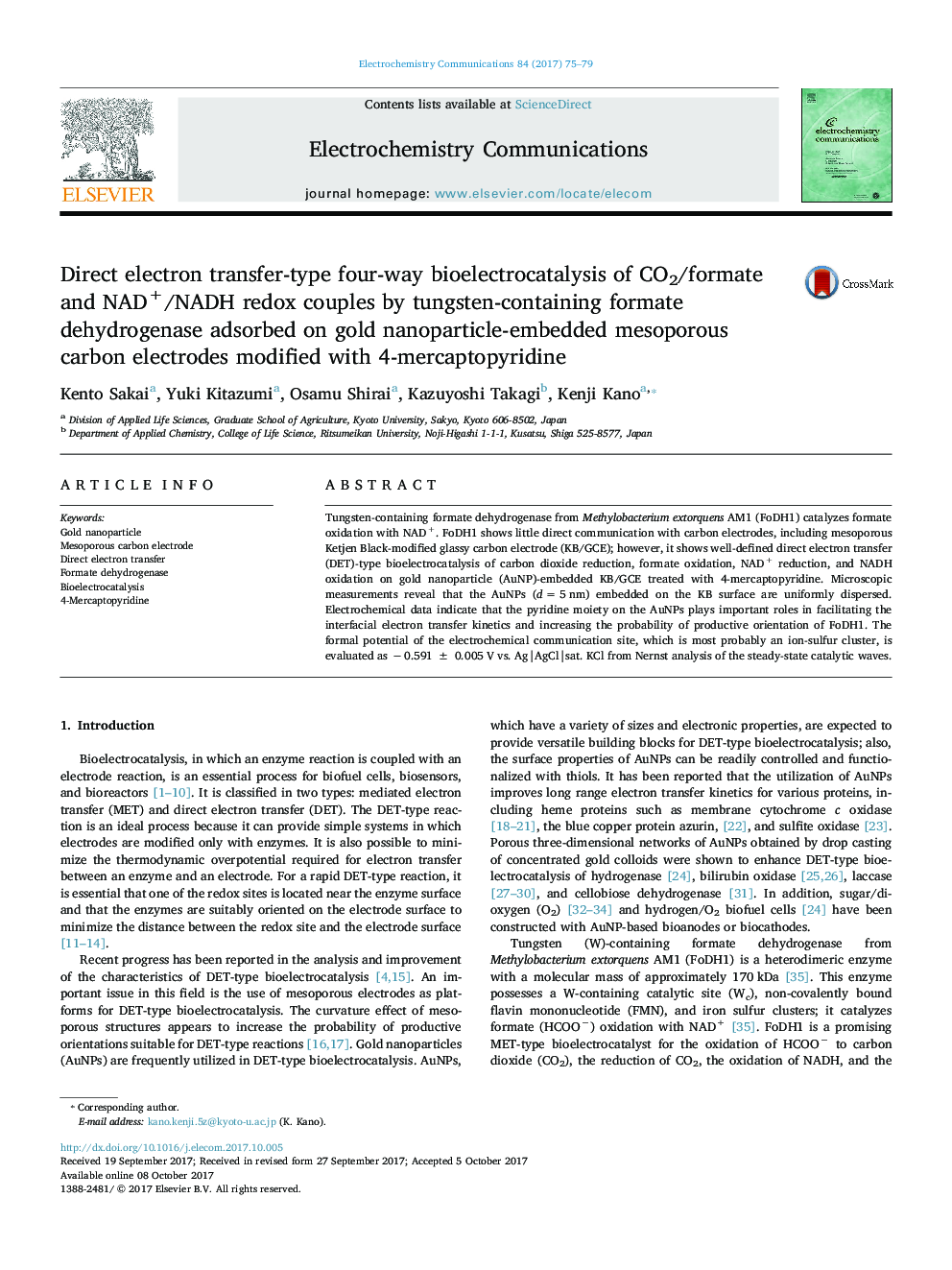| Article ID | Journal | Published Year | Pages | File Type |
|---|---|---|---|---|
| 6469496 | Electrochemistry Communications | 2017 | 5 Pages |
â¢4-Mercaptopyridine-modified AuNP-embedded mesoporous electrode was constructed.â¢The pyridine moiety facilitates the interfacial electron transfer kinetics of FoDH1.â¢FoDH1 on the electrode realizes reversible catalysis of CO2/formate and NAD+/NADH.â¢Sigmoidal steady-state catalytic waves were successfully analyzed with Nernstian equations.â¢The formal potential of an ion-sulfur as an electrochemical communication site was evaluated.
Tungsten-containing formate dehydrogenase from Methylobacterium extorquens AM1 (FoDH1) catalyzes formate oxidation with NAD+. FoDH1 shows little direct communication with carbon electrodes, including mesoporous Ketjen Black-modified glassy carbon electrode (KB/GCE); however, it shows well-defined direct electron transfer (DET)-type bioelectrocatalysis of carbon dioxide reduction, formate oxidation, NAD+ reduction, and NADH oxidation on gold nanoparticle (AuNP)-embedded KB/GCE treated with 4-mercaptopyridine. Microscopic measurements reveal that the AuNPs (d = 5 nm) embedded on the KB surface are uniformly dispersed. Electrochemical data indicate that the pyridine moiety on the AuNPs plays important roles in facilitating the interfacial electron transfer kinetics and increasing the probability of productive orientation of FoDH1. The formal potential of the electrochemical communication site, which is most probably an ionâsulfur cluster, is evaluated as â 0.591 ± 0.005 V vs. Ag | AgCl | sat. KCl from Nernst analysis of the steady-state catalytic waves.
Graphical abstractDownload high-res image (246KB)Download full-size image
